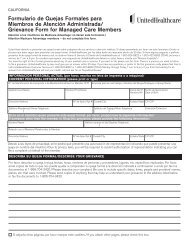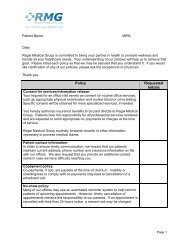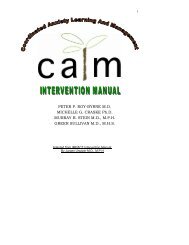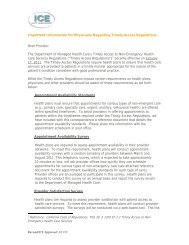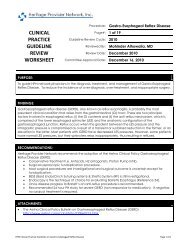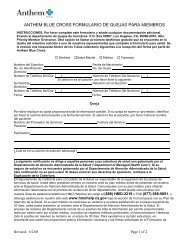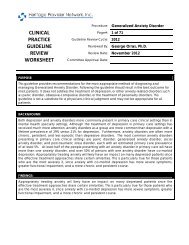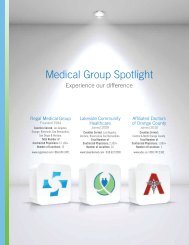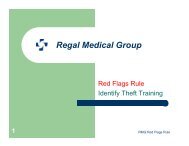Guide to Clinical Preventive Services 2012 - Agency for Healthcare ...
Guide to Clinical Preventive Services 2012 - Agency for Healthcare ...
Guide to Clinical Preventive Services 2012 - Agency for Healthcare ...
You also want an ePaper? Increase the reach of your titles
YUMPU automatically turns print PDFs into web optimized ePapers that Google loves.
Our methods continue <strong>to</strong> evolve as well. Our Procedure Manual, which can befound at www.US<strong>Preventive</strong><strong>Services</strong>TaskForce.org/uspstf08/methods/procmanual.htm, outlines our updated process <strong>for</strong> evaluating the quality and strength of theevidence <strong>for</strong> a service, determining the net health benefit (benefits minus harms)associated with the service, and judging the level of certainty that providing theseservices will be beneficial in primary care. We continue <strong>to</strong> explore the appropriateuse of mathematical modeling <strong>to</strong> help fill research gaps regarding the ages at which<strong>to</strong> start and s<strong>to</strong>p providing a service, and at what time intervals. In addition, we arecommitted <strong>to</strong> improving the communication of our recommendations <strong>to</strong> a broaderaudience, including patients and policymakers.As be<strong>for</strong>e, the letter grade linked <strong>to</strong> each recommendation reflects the magnitude ofnet benefit and the strength and certainty of the evidence supporting the provision ofa specific preventive service. These grades translate <strong>to</strong> practice guidance <strong>for</strong> clinicians:■■■■■■■■Discuss services with “A” and “B” recommendations with eligible patients andoffer them as a priority.Discourage the use of services with “D” recommendations unless there are unusualadditional considerations.Give lower priority <strong>to</strong> services with “C” recommendations; they need not beprovided unless there are individual considerations in favor of providing theservice.Help patients understand the uncertainty surrounding services when the evidenceis insufficient <strong>to</strong> determine net benefit (I statement). Clinicians may read the<strong>Clinical</strong> Considerations section of the full recommendations <strong>for</strong> additionalguidance.As is true of all patient care, preventive services have become much more complex inview of ongoing research. The USPSTF realizes that clinical decisions about patientsinvolve more complex considerations than the evidence alone; clinicians shouldalways understand the evidence but individualize decisionmaking <strong>to</strong> the specificpatient and situation. While providers and patients look <strong>for</strong> simple messages andactions, our recommendations reflect the advances in knowledge in this critical areaof health services, and, in order <strong>to</strong> maximize the health benefits and decrease anyhealth harms, we must consider the new complexity as we do <strong>for</strong> all medical serviceswe provide. The <strong>Clinical</strong> Considerations section of each USPSTF recommendationstatement helps clinicians by offering practical in<strong>for</strong>mation so they can tailor theserecommendations <strong>to</strong> individual patients.vi




